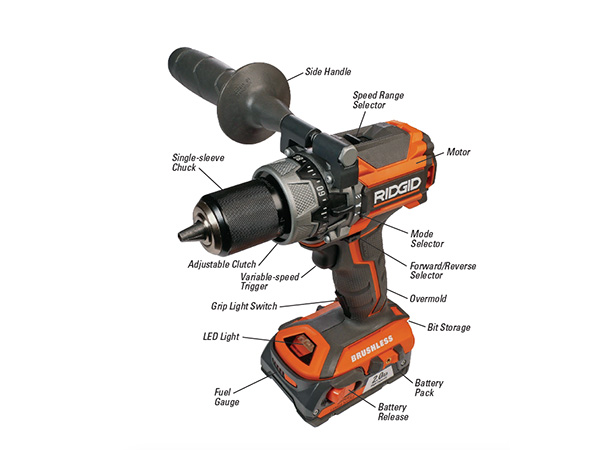
We typically credit the table saw as being the centerpiece power tool of the workshop, but here’s a challenger to that claim. When you think about virtually any woodworking or DIY effort that involves building something — indoor or outdoor furniture, cabinetry, jigs, shop fixtures and home improvement tasks — nearly every single project involves drilling at least one hole. And for that, most of us reach for a cordless drill/driver.
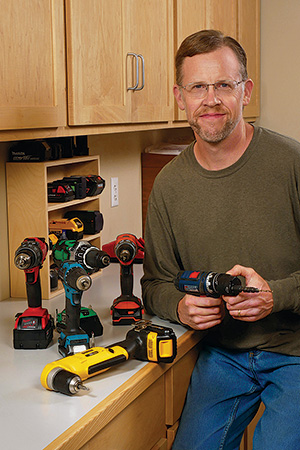
But “drilling” is just part of its versatility. It also drives screws, cuts countersinks or counterbores, makes wood plugs and even saws holes. Then, with the right attachment, it can drum-sand, grind, rasp, abrade and buff. Heck, it can even stir paint or mix drywall mud! That’s asking a lot from a tool that basically holds a bit and spins. But, drill/drivers are up to it all and can deliver on their value over and over again.
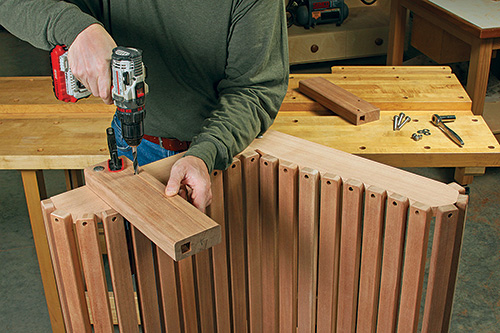
Regardless of brand, cordless drill/drivers share a number of common features. A tool-free chuck grips the drill bit or attachment inside of three jaws, and you use one or sometimes two hands to tighten it. Squeezing the trigger spins the chuck through a range of speeds — every drill/driver worth its salt these days is variable speed. Better models offer high- and low-speed transmissions that you control with a selector switch. Low speed provides maximum torque for drilling large holes or driving fasteners. Flipping to the high-speed range steps things up when drilling with smaller diameter bits or when higher speeds benefit the task — like sanding or cleaning rust off of metal with a wire wheel.
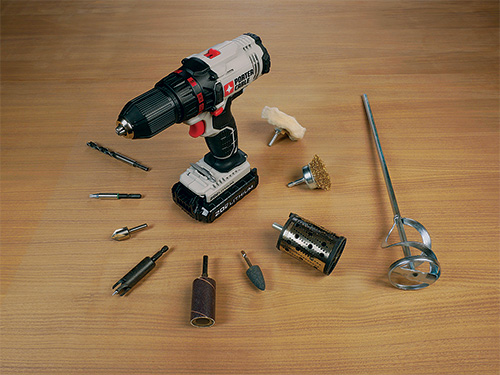
Once holes are drilled, the next step is often driving screws into them. For that job, drill/drivers have an adjustable clutch to help prevent the tool’s torque from either overdriving the screw too deeply or breaking it. A collar behind the chuck enables you to adjust this clutch through numbered settings; the higher the number, the greater torque the tool will apply to the fastener before the clutch engages and stops the chuck from spinning. Most clutch collars also offer a “drilling” setting so the drill/driver can operate at full torque, unimpeded by the clutch.
Lithium-ion Revolution
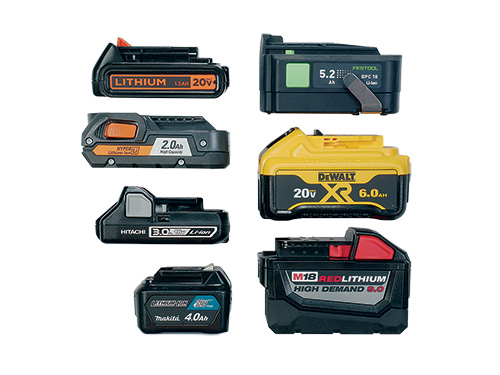
To power these activities, a battery either plugs into the grip or slides onto the tool’s base. Almost without exception these days, that battery’s chemistry is Lithium-ion. It offers dense energy capacity, long life, quick recharges and smaller, lighter pack sizes. Lithium-ion cells are a “smarter” power source, too: sophisticated electronics can help to maximize their efficiency during use as well as their charging cycles. While NiCad ruled the roost for many years prior to Li-ion coming on the scene, Li-ion has become the industry standard for cordless tools of all sorts. And, for the foreseeable future, it’s here to stay.
Three Main Voltages
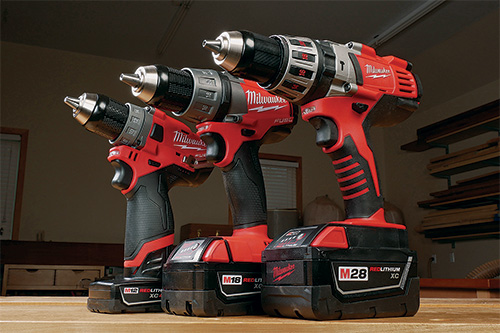
During the “NiCad” period of the 1990s and early 2000s, drill/drivers came in a dizzying number of voltage options: 9.6, 12, 14.4, 15.6, 18, 19.2, 24 and 36. NiCad cell sizes dictated those thresholds, and the tool model options verged on being overwhelming. Now, however, Li-ion batteries have made our drill/driver choices considerably easier. There are three primary voltage categories these days: 10.8-/12- volt, 18-/20-volt or 28-volt. A few departures from these standards are still out there, including 14.4 and 19.2. And, there are some 36-volt giants in the market, too.
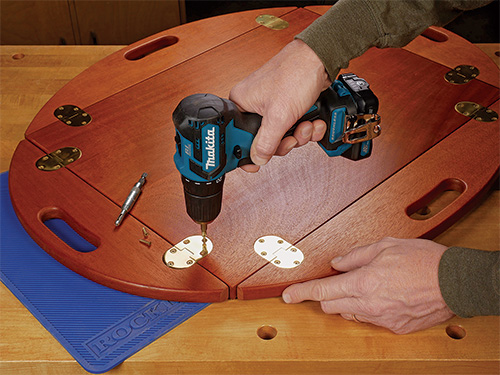
You might wonder why “10.8” seems to equal 12 volts or why 18- and 20-volt tools are essentially the same thing. Well, it all comes down to how manufacturers choose to label their tools. At peak voltage, fresh off the charger, the higher of the two voltages is accurate. A 12-volt battery charges to 12 volts. But, as soon as you begin to discharge the battery, it will operate at its working, or nominal voltage, which is the lower of the two numbers — 10.8 volts. Eighteen- and 20-volt batteries, same deal: 20 optimal, 18 nominal.
What is true about the three voltage sizes, regardless of the “numbers” game, is that the larger the voltage, the bigger and more powerful the motor will be inside the drill/driver — but that’s not to say that bigger is always better. While a plumber might need the gorilla torque of a 36-volt drill to cut 4″ holes for waste pipe all day, does a woodworker need a heavy-duty drill/driver for setting tiny hinge screws or drilling #8 pilot holes? Nope. In fact, I’ve found 10.8-/12- volt drill/drivers to be compact, powerful and pleasantly lightweight for many project tasks. The more delicate the drilling or driving situation is, the more inclined I am to reach for the smallest drill/driver I can find.
Mid-sized Sweetheart
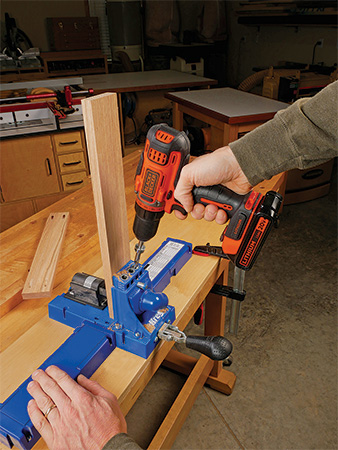
Scroll the drill/driver web pages of any major power tool brand, and you’ll quickly see a trend: 18-/20-volt models outnumber the other sizes, and this voltage category continues to grow every year. Truth be told, professional tool manufacturers like Bosch, DeWALT, Hitachi, Makita and Milwaukee are designing tools to suit their biggest market: contractors. Jobsite users love the power, runtime and moderate size of 18-/20-volt drill/drivers. It’s also a voltage that’s able to support a broad platform of other tool types, like saws, grinders, nailers, impact wrenches and numerous specialty tools. The day is nearly upon us where every power tool a contractor could possibly need will have a cordless 18-/20-volt solution. The manufacturers are determined to see it happen.
Still, we hobbyists and DIYers also appreciate the performance and price points of this voltage size. You can buy a quality drill/driver with a charger, two battery packs and a carry case for around $125. My most used and abused drill/driver in the shop is a 20V MAX* PORTER- CABLE that I bought for about that price, and many comparable models are out there from other brands, too. I rarely need more capacity or features than it offers for general woodworking and home improvement. The pro users have helped us all land on a winning voltage here.
Amp/hour Considerations
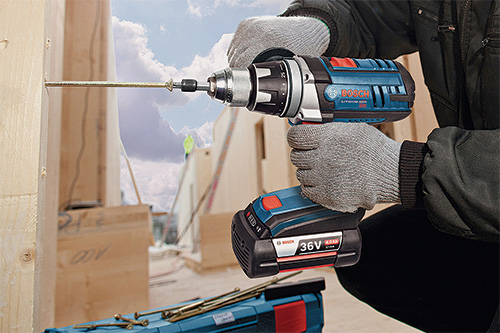
So, what’s important to know about that other number on your drill/driver battery — namely, its amp/hour (Ah) rating? Well, to borrow from an overused analogy, amp/ hours are a measure of how much “gas” the battery “tank” will hold. While amp/hours actually are part of the equation for determining watt/hours (the total power capacity a battery can deliver: voltage x amp/hours = watt/hours), what’s most practical to know is this: the higher the amp/hour rating, the longer your battery will run before it needs to be recharged. So, an 18-volt, 2.0 Ah battery will deplete faster than an 18-volt 4.0 Ah battery. In fact, doubling the amp/hours can more than double the runtime, depending on the battery. The downside to more amp/hours — in years past, anyway — is that more “gas” has required a proportionally larger, heavier “tank.” That bigger battery drawback is withering as the energy density of battery cells continues to improve.
Drill/drivers Are Gateway Tools
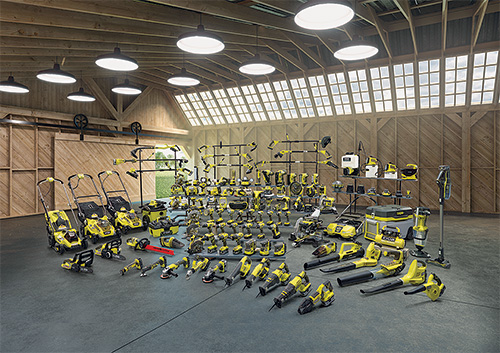
Purchasing a cordless drill/driver often opens the door to a vast number of other tools that will run off of the same batteries, and those options continue to expand. This trend is especially true for 18-/20- volt tools.
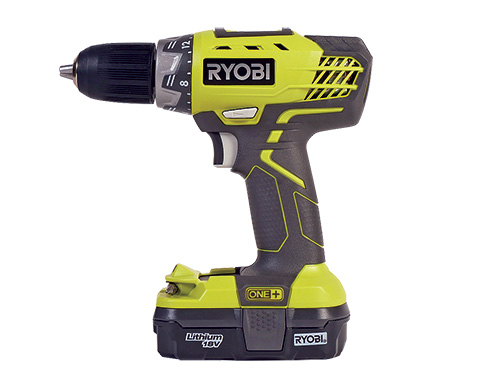
So, before you plunk down your hard-earned cash on a drill/driver, take a careful look at the other “bare” tools the manufacture offers within the same voltage category. Then buy a drill/driver from a brand that best suits your broader cordless tool interests. It’s a way to save money over having to buy dedicated chargers and batteries from multiple manufacturers or voltage platforms.
Features to Watch For
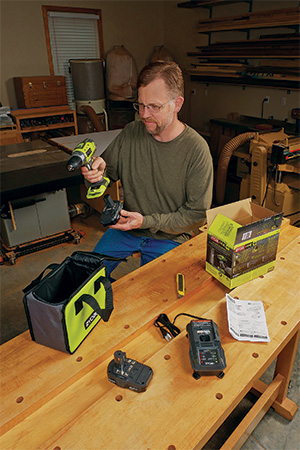
Drill/drivers are a fiercely competitive market — after all, almost all of us need one! So, if you’re willing to spend a bit more on a “pro” quality tool, you’ll get most or all of the following features. If you’re shopping for your first cordless drill/driver, here are some of the better features to keep in mind.
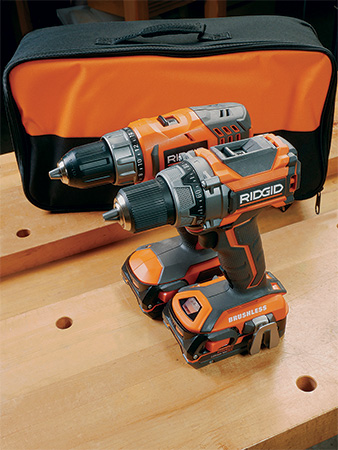
– Brushless motors are all the rage these days. Without carbon brushes that contribute friction and heat, brushless motors are more compact, run cooler and communicate better with their batteries than typical DC drill/driver motors, thanks to monitoring electronics inside the tool. End users will notice that “brushless” drill/drivers will have a shorter motor housing, which can be a big help in tight quarters. Will you realize a tremendous difference in power or a dramatically longer tool life? For a hobbyist, probably not. But brushless is the next big step forward in efficiency, and it doesn’t cost an arm and a leg more than models with conventional brushed motors.
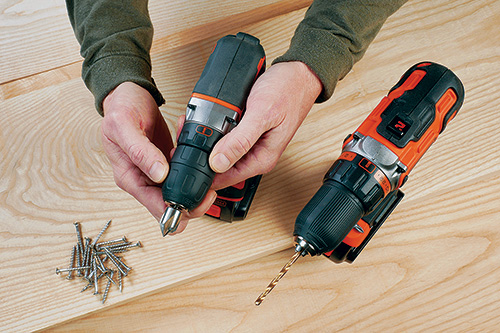
– Single-sleeve chucks: The ability to tighten or loosen the chuck with one hand is a convenience you’ll appreciate the first time you’re forced to grab a split-sleeve chuck with two hands, instead. A single-sleeve chuck is faster and easier to tighten, and the ratcheting advantage ensures a slip-free grip on smooth-shank drill bits. The best single-sleeve chucks even have carbide jaws.
– All-metal transmissions are a feature pro users look for. Budget priced drill/drivers may have plastic gears or a mix of both plastic and metal. Common sense will tell you that an all-metal transmission will win out for durability in the long run — whether your drill/driver is a constant companion or only used occasionally.
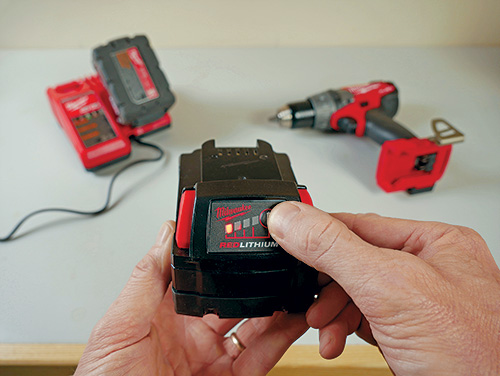
– Fuel gauges: Here’s a detail I thought was a cute extra when it first came to market, but now I wouldn’t want to be without it! It’s darn handy to be able to check the amount of charge that remains in a battery before you climb the ladder, head out to the yard or get set up in your unwired attic for a DIY repair. Some manufacturers locate the fuel gauge on the tool body, but most provide it on the battery. Either way, I’ll bet you’ll be surprised by how quickly you get used to checking that little glowing array of LEDs that give you confidence your battery is ready to go.
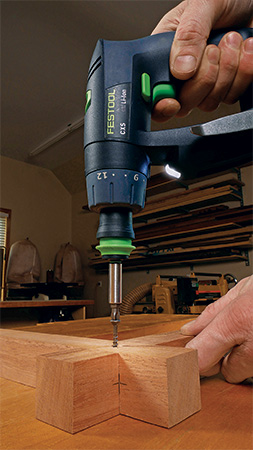
– LED task lights: And speaking of LEDs, one or several white task lights on your drill/driver can really brighten up a dark corner of a cabinet interior when you need the illumination most. They also make it easier to sight your pencil crosshairs when positioning a pilot hole or snaking a small screw down inside a piece of hardware when installing it. And if your overhead shop lighting leaves something to be desired, is it really ever possible to have too much light? I don’t think so. For all of these situations, thankfully, most quality drill/drivers now have task lights that are powered by the tool battery to help make jobs easier to see. Just be sure the beam of light actually targets the area immediately in front of the chuck. Some tools are designed more effectively in this regard than others. You can’t adjust where the light beam projects, so be sure to check the LED feature on the drill/driver you have in mind before you buy it.
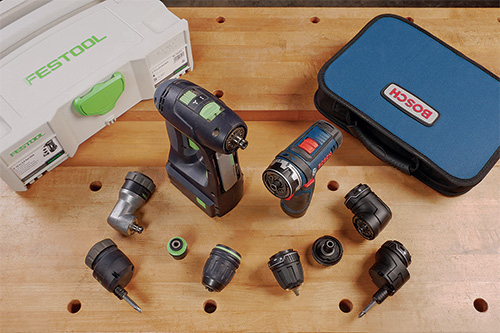
– Interchangeable chucks: Festool and Bosch offer drill/drivers that can help save the day when a project requires drilling or driving in an awkward location. These models come with right-angle and offset chucks, plus a conventional three-jawed chuck and a hex-bit quick connect chuck. They all pop on and off the drill/driver body in a snap and without tools. Are multiple chucks essential? No. But, boy oh boy, will you be happy you have them when that rogue need comes up — and eventually, it will!
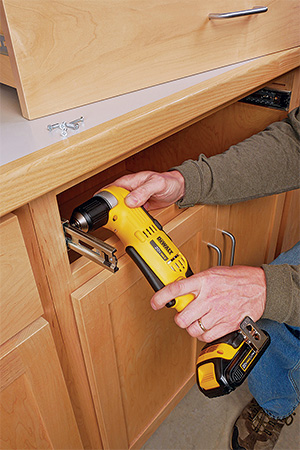
Alternately, most manufacturers make right-angle drill/drivers that can be bought as “bare” tools to run off of your drill/driver batteries.
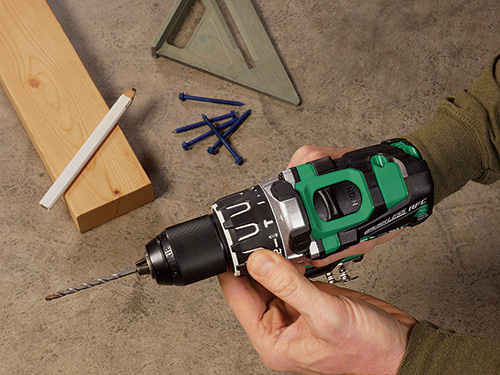
– Hammering function: Hammer drills are designed with a percussive feature that spins the chuck while also driving it forward, multiple times a second. It’s a must have function when drilling into masonry and concrete. Aside from these materials, you won’t use the hammer setting for anything else. Wood, sheet goods, metal and other drilling surfaces can all be tackled with a conventional drill. Hammer drills can be switched between hammering mode and “normal” mode, too, so hammer feature is no hindrance for all-around use, but you will pay a bit more for the added convenience. If you don’t plan to bore holes into concrete or install masonry screws anytime soon, a hammer drill probably isn’t worth it. I can count on one hand the number of times I’ve really needed it in the past 30 years.
– Hard cases or a soft-sided duffel bag for your drill/driver, charger and spare batteries are helpful to have, and stepping up to a mid-priced or pro quality model will surely get you one of these options. Hard plastic cases are easy to stack or stand on end, and they’ll help keep your investment dry if you carry it in the open bed of a pickup truck. A duffel bag is handy, too: I often use it to tote all the other tools I need to a project site when I’m not storing the drill/driver and its accessories in it.
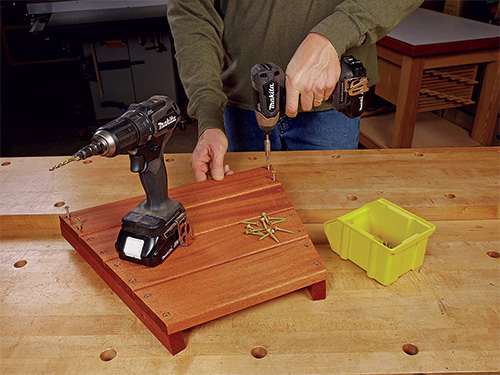
– Drill/driver-impact driver kits: Here’s one last consideration that will boost your drilling and driving efficiency. A drill/driver will drive screws, of course, but an impact driver does it even better because it’s designed exclusively for that job. The larger the fastener, the better it works — it won’t twist your wrist like a drill/driver will. If you can splurge, buy a kit that comes with both tools. Then you can drill and drive with two tools instead of one.






